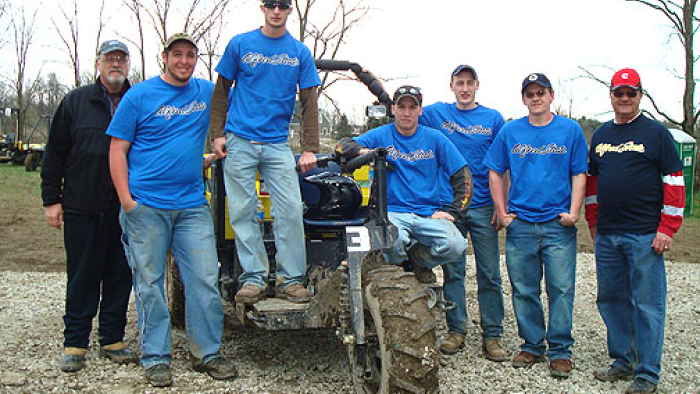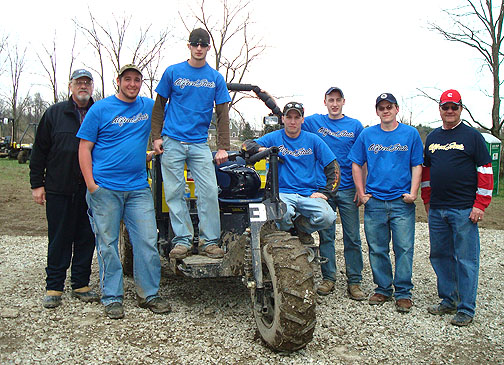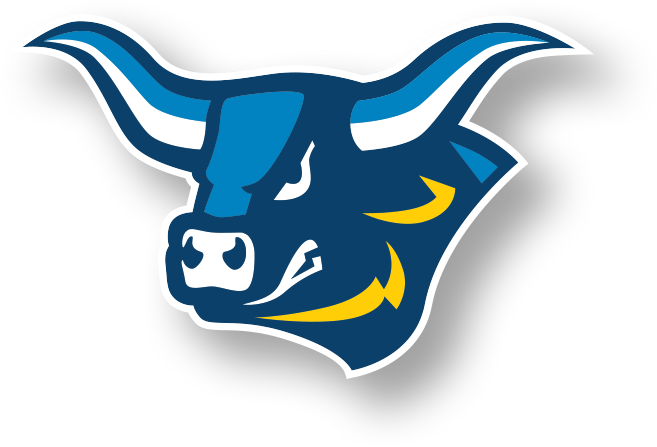
At a glance
 Five baccalaureate-level mechanical engineering seniors at Alfred State College, under the guidance of their project advisers, SUNY (State University of New York) Distinguished Service Professor Dr. Edward Tezak, and Ray Gleason, instructional support technician, captured first place in the eighth annual national BUV (basic utility vehicle) competition held recently in Indianapolis.
Five baccalaureate-level mechanical engineering seniors at Alfred State College, under the guidance of their project advisers, SUNY (State University of New York) Distinguished Service Professor Dr. Edward Tezak, and Ray Gleason, instructional support technician, captured first place in the eighth annual national BUV (basic utility vehicle) competition held recently in Indianapolis.

 Five baccalaureate-level mechanical engineering seniors at Alfred State College, under the guidance of their project advisers, SUNY (State University of New York) Distinguished Service Professor Dr. Edward Tezak, and Ray Gleason, instructional support technician, captured first place in the eighth annual national BUV (basic utility vehicle) competition held recently in Indianapolis. In previous years, the ASC team has captured spots in the top 10, including seventh place in 2005, third place in 2006, and fifth place in 2007.
Five baccalaureate-level mechanical engineering seniors at Alfred State College, under the guidance of their project advisers, SUNY (State University of New York) Distinguished Service Professor Dr. Edward Tezak, and Ray Gleason, instructional support technician, captured first place in the eighth annual national BUV (basic utility vehicle) competition held recently in Indianapolis. In previous years, the ASC team has captured spots in the top 10, including seventh place in 2005, third place in 2006, and fifth place in 2007.
A BUV is, according to the Institute for Affordable Transportation (IAT) which sponsors the competition, a vehicle for change. "Its purpose is to help meet peoples' everyday needs at the ends of the earth. More than cars, the IAT builds opportunity and freedom. BUVs will promote trade and reduce poverty at a grassroots level. Besides rural transportation, BUVs also represent a mobile power source for further development," notes Will Austin, director, Institute for Affordable Transportation. He indicated that Alfred State College had the largest margin of victory in the history of the event dating back to 2001.
A BUV can be assembled almost anywhere, by almost anyone. Simplicity is key. The equipment needed is very simple also...even small repair shops have the tools to build a BUV. Basic Utility Vehicles are rugged, simple vehicles that can carry 1,200-pounds of cargo. Using primarily off-the-shelf parts, the unassembled BUV skid pack will cost about $1,300 before duties and freight. They are designed for warm climates, slow speeds (up tor 20 mph), and rural, unpaved roads. BUVs provide mobility, freedom, and economic hope to people in rural areas of developing countries.
The Alfred State team annually consists of seniors who are developing their vehicle as part of the fulfillment of their required Senior Design Capstone Project. Students involved in the BUV competition form their team in late spring of their junior year and commence their design and build at the beginning of the senior year for the year-long effort. This year, the Alfred State College entry was built by team leader Dave Mapes, Highland Mills; Nick VanDeWeert, Harpursville; Dave Winquist, Wilson; Tim Beechler, Holland; and Kyle Colbey, Utica.
One major requirement for this year was the design of the front end suspension system which was connected to the rear end of a light pick-up truck frame to form a three-wheel vehicle. The other major requirement was to have the ability to convert the vehicle--in less than five minutes--from a 1,200 lb. cargo carrier to a school bus to be used in Africa. The Alfred Team completed the transition in two-and-one-half minutes. It was powered by a 10 hp gasoline engine.
Students from six universities, including Purdue University, University of Cincinnati, John Brown University, Miami of Ohio University, Rose-Hulman University, and three independent competitors-Chelsea I & II, and the IAT Vehicle destined for West Africa competed in events that tested both vehicle and driver skills. University of Dayton had a catastrophic frame failure the day before the competition and the second University of Cincinnati team did not complete its vehicle in time to compete. From 2001 through 2007 the competition has involved 460 students and 105 BUV teams from 25 separate universities/colleges.
The driving circuit contains many obstacles simulating the rough roads of developing countries. Events included the mud pit, which consisted of two circuits of deep ruts with mud up to 15" deep; an obstacle course, which included logs, ditches, moguls, rocks, several 8-14" drop offs, cement blocks and railroad ties, ruts, and "frame twister moguls." Other events included the endurance test, acceleration test, agility course, the static pull, and oral report. The Grand Finale was the swamp crossing.
Judges from Arvin-Meritor, Ford Motor Co., Delphi, and IAT decided the competition's outcome. Projects were judged on the following criteria: endurance, acceleration, mud pit, hill climb, agility, obstacle, written report, bill of materials, oral presentation, specifications met, design objectives, and judges' drive.
The Institute for Affordable Transportation (IAT), a not-for-profit public charity, sponsors the annual intercollegiate Basic Utility Vehicle (BUV) Competition in Indianapolis. The competition helps facilitate the low-cost development of simple, appropriate vehicles for rural economies. Each year the specifications are changed to meet a requirement from a different developing country. This year's challenge was to design a three-wheel vehicle based on the rear clip of a small pick-up truck, with a school bus attachment which connects to the rolling chassis. The bus is intended to serve school children and orphanages in Africa. IAT has learned that people use the cargo vehicles to haul children. AIT's question for engineering students is: given this scenario, how can you make the BUV safer for children passengers?
In addition to meeting the design challenge, other requirements such as low cost, design emphasis on the steering and front suspension, and design for small scale assembly operations in Africa need to be met. It should be possible to construct one vehicle per day with minimal factory investment. After the competition, the student-made vehicles can be donated for use in developing countries.
Alfred State College, a member of the technology college sector within the State University of New York (SUNY) system, offers outstanding educational opportunities for students in its nearly 60 associate degree programs, 16 baccalaureate degree programs, and several certificate programs. ASC continues to expand its online education offerings to include more than 56 online courses as well as two complete curriculum options (health information technology and court and realtime reporting). Numerous vocational-technical offerings stressing hands-on learning are available at the School of Applied Technology Campus located in nearby Wellsville, NY. The College is accredited by the Middle States Association of Colleges and Schools, and several programs are also accredited or approved by program-specific professional organizations. The College is located in Alfred, NY, a scenic village in Allegany County. It is 15 miles north of the Pennsylvania border, 70 miles south of Rochester, and 90 miles southeast of Buffalo.
